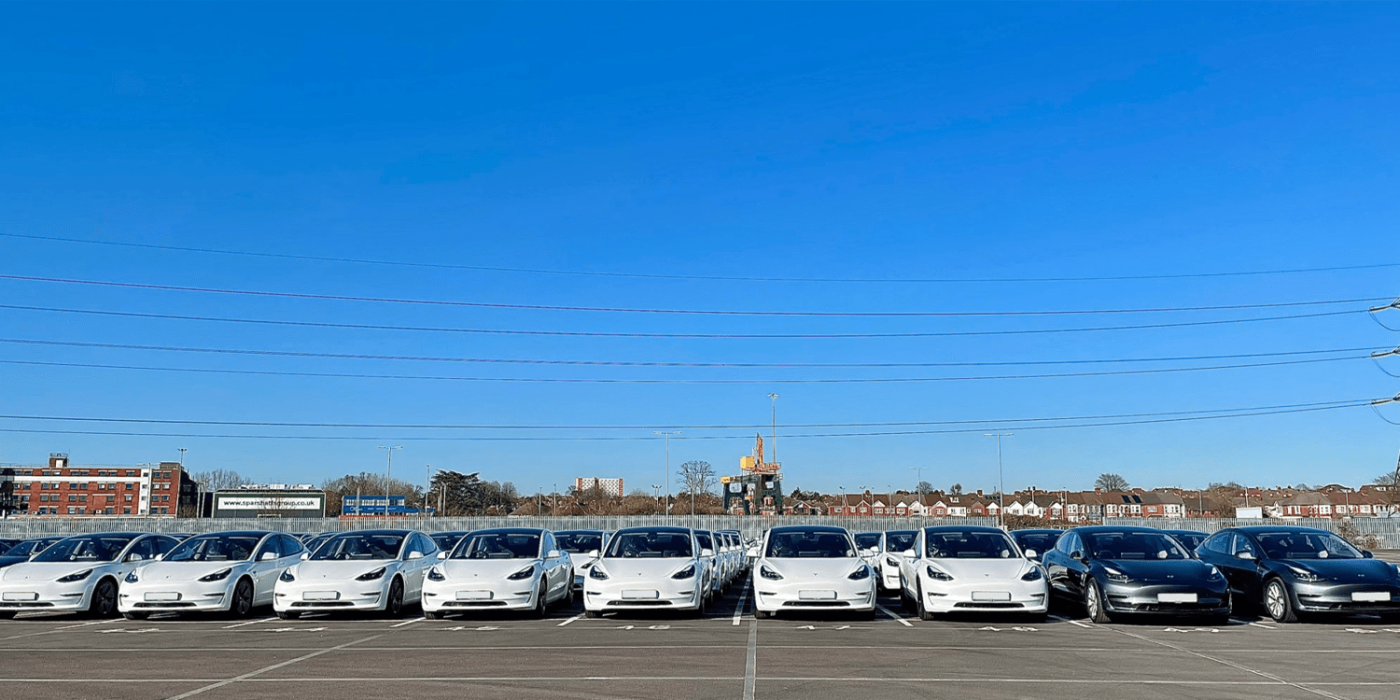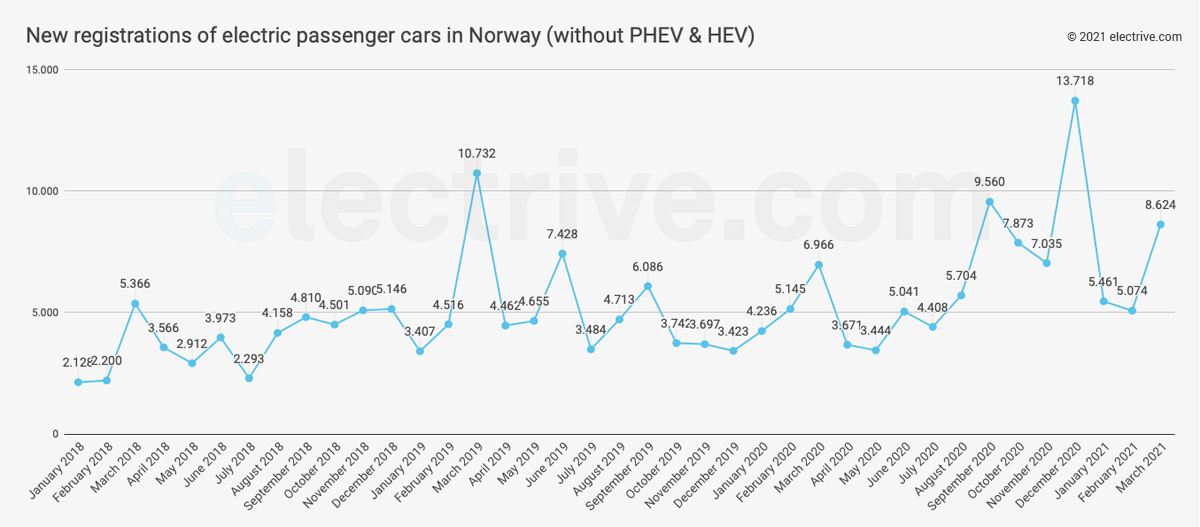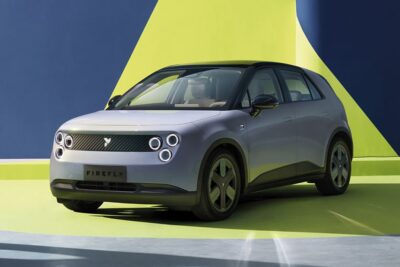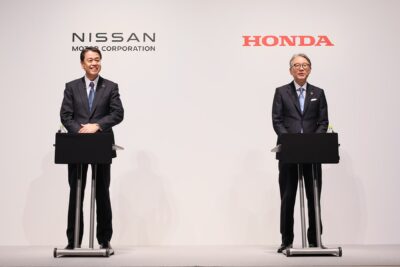Norway registers 84.8% market share of plug-in cars in March
The Norwegian electric car market is en route to full recovery as sales of EVs remain strong and begin to surpass previous statistics. This March, electric vehicles accounted for 56% of all new car registrations, up 23.7% from the same month in 2020.
In numbers, buyers in Norway bought 8,624 new electric passenger cars in March 2021. Besides, there were 4,379 new plug-in hybrids. Norway’s most successful model across all drive types last month was the Tesla Model 3, with 2,169 new registrations.
Compared to March 2020, the now 8,624 are an increase of 23.7 per cent – at that time, there were 6,966 e-cars. In February, it was still a slight minus compared to the same month last year. Year-to-date, new e-car registrations are up 17.2 per cent from the first quarter of 2020, at 19,159.
The electric car market share was 56 per cent in March. This means the 47.5 per cent market share in February was a one-time slip below the 50 per cent mark. In January, it was 53 per cent, and in December 2020, it was a whopping 66.7 per cent.
4,379 plug-in hybrids joined the 8,624 BEVs in Norway in March. Thus, the PHEVs had a market share of 28.6 per cent last month (February: 31.6 per cent). Compared to March 2020, PHEVs were up 83.1 per cent. In contrast, “non-rechargeable” hybrids declined by 2.1 per cent. They only accounted for 865 new registrations – but their market share of 5.6 per cent was still higher than that of diesel and gasoline-powered vehicles (4.7 and 4.8 per cent, respectively).
If, on the other hand, BEVs and PHEVs are added together, March’s market share was a proud 84.8 per cent (February: 79 per cent, January: 82 per cent). The market share of pure combustion vehicles was 9.5 per cent, dropping into the single-digit percentage range for the first time.
BEVs regained market share, and PHEVs lost slightly is also due to Tesla’s usual strength in the last month of a quarter: with 2,169 units, the Model 3 was the only model series with four-digit registration figures in March. The Toyota RAV4, still the top performer in February thanks to its PHEV version, landed in second place with 908 units. With the strong March, the Model 3 has also taken the top spot for the current year: With 2,566 vehicles (by the end of February, there were only 397 units), the Tesla sedan leads here ahead of the RAV4 with 2,469 vehicles.
The rest of the top ten shows the strong role of BEVs: the VW ID.4 is already in third place with 856 units, followed by the Volvo XC40 with 791 vehicles (the Norwegian statistics do not differentiate here between the combustion engine, PHEV and BEV versions). The Nissan Leaf (637 units), Mercedes EQC (589 new registrations) and Audi e-tron (430 cars) rank fifth through seventh, followed by the Polestar 2 (396 units), BMW X1 (364 cars including PHEV) and MG ZS EV (362 new registrations). Therefore, seven of the ten best-selling models are only purely electric, while plug-in hybrids play an important role in the other three model series. Unfortunately, as mentioned, this cannot be quantified exactly.
What is striking: The top 20 of the current year do include model series with electric or PHEV versions, such as the Hyundai Kona, Kia Niro, Volvo XC60, BMW i3 and also a Toyota CH-R. The VW ID.3 does not appear in the top 20 – but with 457 units of the BMW X3 in 20th place, the hurdle would be manageably high.
With reporting by Sebastian Schaal.






0 Comments